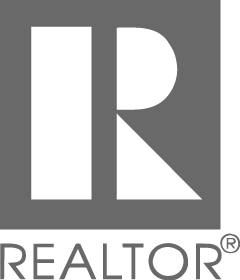As a property owner in the greater Austin area, ensuring your investment is well-protected is a top priority. One of the key steps to safeguarding your rental property is selecting the right landlord homeowner’s insurance policy. At TALK Property Management, we understand the complexities involved in choosing the right coverage, and we’re here to guide you through the process. Below, we outline essential factors to consider when selecting a policy and why it matters.
1. Understand the Difference Between Homeowner’s Insurance and Landlord Insurance
While a standard homeowner’s insurance policy is designed for owner-occupied homes, it doesn’t provide sufficient coverage for rental properties. A landlord insurance policy offers coverage that accounts for the unique risks associated with renting out your property. This typically includes property damage, liability, and loss of rental income, providing more comprehensive protection.
2. Evaluate Property Coverage Options
Ensure that the policy you choose covers the cost of repairing or replacing the rental property in case of damage caused by events like fire, storms, or vandalism. Check if the policy covers the building structure, any outbuildings, and even features like fences and garages. Additionally, consider policies that offer replacement cost coverage rather than actual cash value, as this can provide more protection if a claim needs to be made.
3. Consider Liability Protection
Liability protection is a crucial component of a landlord insurance policy. It can cover legal and medical expenses if a tenant or visitor is injured on your property due to negligence or unsafe conditions. Given the litigious nature of today’s society, having robust liability coverage helps protect your assets and ensures peace of mind.
4. Add Loss of Rental Income Coverage
Unexpected events, such as a fire or flood, could leave your property uninhabitable for a period. Loss of rental income coverage can reimburse you for the lost rent while your property is being repaired, allowing you to maintain steady cash flow even in challenging times.
5. Look Into Optional Coverage Add-Ons
Depending on your property’s location and specific risks, you may want to consider additional coverage options, such as:
- Flood Insurance: Standard policies often don’t cover flood damage. If your property is in a flood-prone area, adding this coverage is essential.
- Earthquake Insurance: Texas may not be known for earthquakes, but they do happen. Consider this coverage if your property is in an area that’s at risk.
- Umbrella Policies: For landlords with multiple properties, an umbrella policy can provide additional liability coverage over and above your standard policies.
6. Understand Tenant-Related Coverage
Landlord insurance does not cover your tenant’s belongings, so it’s advisable to encourage tenants to purchase renters’ insurance. Renters’ insurance covers personal belongings and offers liability protection for tenants. Requiring renters’ insurance as part of your lease agreement can reduce potential conflicts and claims.
7. Check the Policy’s Deductibles
The deductible is the amount you pay out of pocket before the insurance company covers the rest of a claim. Policies with higher deductibles tend to have lower premiums, but make sure the deductible amount is affordable for you in case you need to file a claim.
8. Consult a Professional
The specifics of insurance can be overwhelming, and no two rental properties are the same. Consulting with an experienced insurance agent can help ensure that you’re getting the best coverage for your property at a competitive price. Our team at TALK Property Management is also here to help you navigate the complexities of rental property insurance and connect you with trusted local experts.
Why Choosing the Right Insurance Matters
At TALK Property Management, we’ve seen firsthand how having the right insurance policy can make a huge difference. A well-chosen policy not only protects you financially but also reduces stress and allows you to focus on managing your property without worry. Remember, it’s better to have the right coverage and not need it than to need it and not have it.
Protect Your Investment with TALK Property Management
Whether you own a single rental property or a portfolio of rentals, ensuring you have the right insurance coverage is essential. At TALK Property Management, we’re dedicated to helping property owners throughout the greater Austin area safeguard their investments. If you have questions about selecting landlord homeowner’s insurance or need assistance with managing your rental property, contact us today. We’re here to help you succeed.


